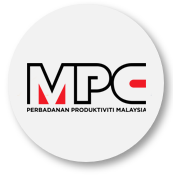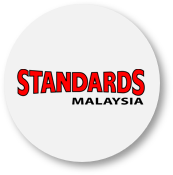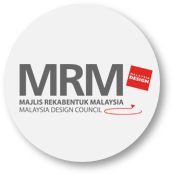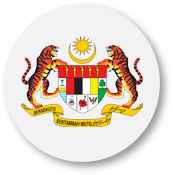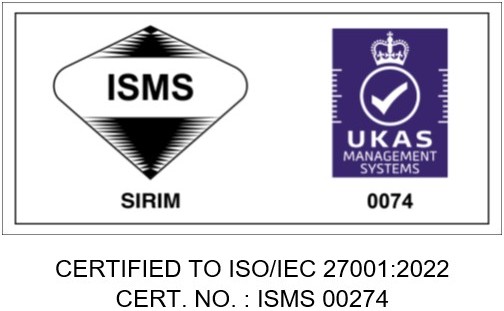Wood Based Industry
-
Major sub-sectors:
-
sawn timber, veneer and panel products which include plywood and other reconstituted panel products such as particleboard/chipboard/fibreboard,
-
mouldings and builders' joinery and carpentry (BJC) such as doors/windows and its components panels and flooring board/parquet; and
-
furniture and furniture components.
-
-
The industry is predominantly owned by Malaysian and it is estimated that 80 - 90 per cent of the companies comprise small and medium-size (SME) establishments.
-
Most of the larger sawmills, veneer and plywood mills are located in Sabah and Sarawak. Mills in Sabah and Sarawak utilise tropical wood species for the production of sawn timber, veneer, plywood and other veneered panel products. More than 45 per cent of the plywood mills and 60 per cent of the mouldings mills are located in Sabah and Sarawak.
-
The downstream processing mills for the production of fibreboard, BJC as well as furniture and furniture components are mainly located in Peninsular Malaysia. These mills mainly utilise rubberwood which are sourced from sustainable plantations.
-
Malaysian furniture manufacturers produce a wide range of furniture from office, kitchen, bedroom, dining room, occasional, living room, upholstered furniture/sofa, outdoor and garden furniture. Furniture is made from not only wood, but also all types of materials such as rattan, metal, fabrics, plastic, glass, marble and other composite materials. The furniture manufacturers are located mainly in Johor, Selangor, Sarawak, Perak and Melaka.
Sectoral Performance
- Sawn Timber/Sawn Logs
An established industry with 1,019 sawmills in operation; (Peninsular Malaysia (671), Sabah (177) and Sarawak (171). Exports of saw logs and sawn timber in 2011 amounted to RM5.2 billion with exports mainly to Thailand, the Netherlands, People's Republic of China, Japan and Republic of Singapore.
- Panel Products
Plywood/Veneer
In 2011, exports of plywood amounted to RM5.1 billion . The range of plywood produced includes common veneer-faced plywood, overlaid plywood such as printed paper and polyester plywood, plywood for concrete formwork and marine plywood. Malaysian plywood has achieved international standards such as Japan Agricultural Standards (JAS), British Standards (BS) and International Hardwood Products Association Standards (IHPA) for the US market and Harmonised European Standards (EN) for Europe market. Currently, Malaysia is the largest exporters of tropical plywood in the world with 183 mills in operation.
Particleboard
In view of the need to maximise the utilisation of wood resources, the industry has diversified into the production of high value-added reconstituted panel products such as particleboard and medium density fibreboard. The particleboard industry has grown and currently there are 32 mills in operation. The industry, over the years has successfully exported its products particularly for use in the furniture industry.
Medium Density Fibreboard (MDF)
The MDF industry currently has 15 plants with a total annual installed capacity of 2.9 million cubic meter. In 2011, exports of MDF from Malaysia amounted to RM1.1 billion . The industry has started utilising acacia mangium and mixed hardwood to produce MDF as alternatives to rubber wood. Currently, Malaysia is the world's third largest exporter of MDF, after Germany and France. MDF for Malaysia has attained international standards such as BS, Asia-Pacific: Japan Australia and New Zealand (JANS), and EN standards. A number of companies have also ventured into the production of laminated / printed MDF.
Veneered Panels Products
Besides MDF, the industry has continued to develop engineered products from veneer such as laminated veneer lumber (LVL), laminated veneer cross-band (LVB) and laminated veneer sandwich (LVS) to meet the demand for structural and industrial applications. The industry combines modern technology with the efficient use of natural resources to produce these products for the export market. Besides being environmentally friendly, these products, with enhanced structural quality to meet different climatic conditions, are increasingly being used in the construction industry.
- Mouldings and Builders', Joinery & Carpentry (BJC)
BJC products include architectural mouldings (panelling, skirting, crowns, and chair rails), doors/windows and accessories, wooden flooring and wooden railings. Exports of mouldings and BJC are mostly to the Netherlands, Australia, Japan and Germany. In 2011, exports of mouldings amounted to RM757.1 million while exports of BJC valued at RM1 billion . The major products exported were wooden floorings and wooden doors. To date, there are 373 mouldings and joinery plants in Malaysia.
- Furniture and Fixtures
-
Malaysian furniture industry is highly export-oriented with over 90% of its production exported. Malaysia was the ninth largest exporter of furniture in the world in 2010 exporting to more than 160 countries. In 2011, exports of wooden furniture amounted to RM6.2 billion and the main export destinations were the USA, Japan and Australia.
-
Among the furniture exported are kitchen furniture, bedroom furniture, upholstered with wooden frame and office furniture of which over 80 per cent are made from rubber wood, a light coloured, medium hardwood popularly called ‘Malaysian oak' . The export of garden/outdoor furniture from tropical hardwood is mainly for the European market. The solid tropical wood species used are known for their durability under different climatic conditions. Besides these traditional markets, Malaysian furniture has gained access to the markets in New Zealand, South America, Middle East, Africa and Russia. Malaysia is a major supplier of office furniture to the Middle East market.
-
There are more than 2,000 Malaysian furniture companies in operation, mainly located in Peninsular Malaysia. A high concentration of furniture establishments are in Johor (Muar and Kluang), Selangor (Klang and Sungai Buloh) and Melaka (Bukit Rambai). A high concentration of furniture establishments are in Johor (Muar and Kluang), Selangor (Klang and Sungai Buloh) and Melaka (Bukit Rambai).
-
Malaysian furniture manufacturers have given greater emphasis on the finishing, design and production of higher quality products with own-brand mostly for the export market. Some of these companies have moved from supplying ready-to-assemble furniture towards manufacturing own-designed furniture.
-
Recognizing the need to move from designing manually to the use of Computer Aided Design (CAD), AutoCAD is one of the popular software system used by Malaysian furniture manufacturers today. In order to produce designs which are both functional and aesthetic, Malaysian furniture companies have ventured to utilise a wide range of other materials such as metal, glass, plastic and other composite materials in combination with rubber wood or other wood species for the increasingly sophisticated market.
- Biocomposites and Biomass
Malaysia has vast amounts of untapped natural fibre materials available from the agricultural sector. These fibre and biomass materials range from rice husks, coconut trunk fibres, kenaf to oil palm biomass in the form of oil palm trunks (OPT), oil palm fronds (OPF) and empty fruit bunches (EFB). These alternative raw materials offer vast potentials for development. The Government encourages industry players to undertake more R&D to ensure the reliability of these alternative materials. In 2011, this sub-sector contributed the highest investments in the wood-based industry
Investment Opportunities in the Wood-based Industry
-
Malaysia's focus in the development of the wood-based industry is in value added downstream products. This should be further supported through the development of the industry in an integrated manner, combining both manufacturing activities and research and development including product design and market promotion. This is important in the development of the wood-based industry as increasing competition from low-cost and resource-rich countries would inevitably force Malaysia out of the low-end markets.
-
The industry has moved into the production of engineered wood products from other materials such as bamboo,rattan and fibres such as palm biomass (oil palm trunks, empty fruit bunches, kernels), kenaf and other agricultural materials (saw dust, rice husks and coconut trunk fibres) for the production of particleboard, fibreboard pellets, briquettes and other composite products. The reconstituted panel products industry has also diversified into the manufacture of high value-added reconstituted composite products such as fibre-reinforced polymer composites (FRPC). The products can be in the form of board/profile, and suitable for use in industrial,
construction, automotive and furniture industries. -
Engineered wood products can be divided into two categories i.e. structural and non-structural wood products. Structural products include structural plywood, oriented strand board (OSB), structural composite materials, glue laminated timber (Glulam), laminated veneer lumber (LVL), strand lumber (parallel or oriented). Non-structural engineered woods are particleboard and medium density board (MDF). Currently, Malaysian wood manufacturers produce structural plywood, LVL, particleboard and MDF.
Development
-
The Promoted Products under the Promotion of Investment Act (PIA) 1986 was revised recently and is effective from March, 2012. The new promoted products for the wood-based industry are as follows:-
- Design, development and production of wooden furniture
- Engineered wood products excluding plywood
- Agricultural waste or agricultural by-products
- Kenaf-based products such as kenaf particle or fibre, reconstituted panel board (particleboard and MDF) and moulded products
- National Timber Industry Policy (NATIP) which was launched in 2009 is the new policy formulated for the Malaysian timber industry until year 2020. This policy complements the IMP3 target where it is envisaged to provide new directions for the Malaysian timber industry to remain sustainable, competitive in the challenging global environment and to meet the target of RM53 billion in annual export earnings by 2020. NATIP has outlines programmes and activities to encourage and continuously support the industry in areas of innovation and technology; marketing and promotion; human capital; funding and incentives as well as develop bumiputera entrepreneurs at all levels to improve their capability in management, production skills and marketing strategy.
Last Updated 2015-05-14 11:59:00 by admin2







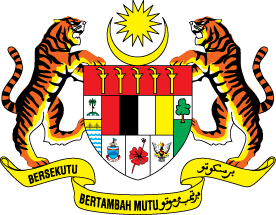





 Home
Home










